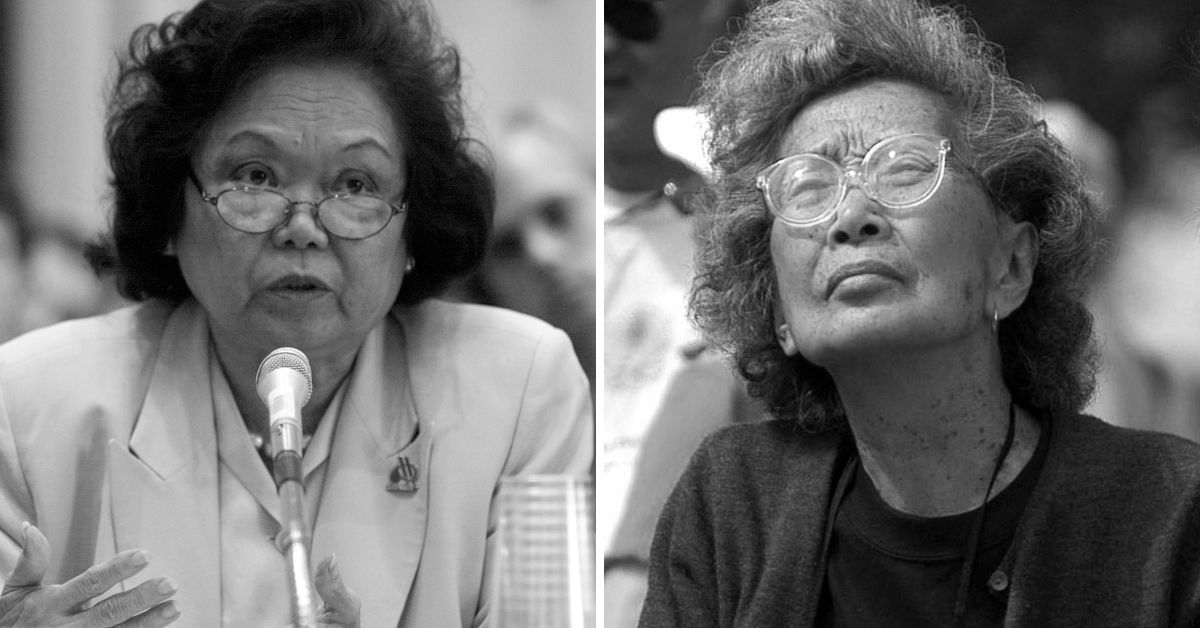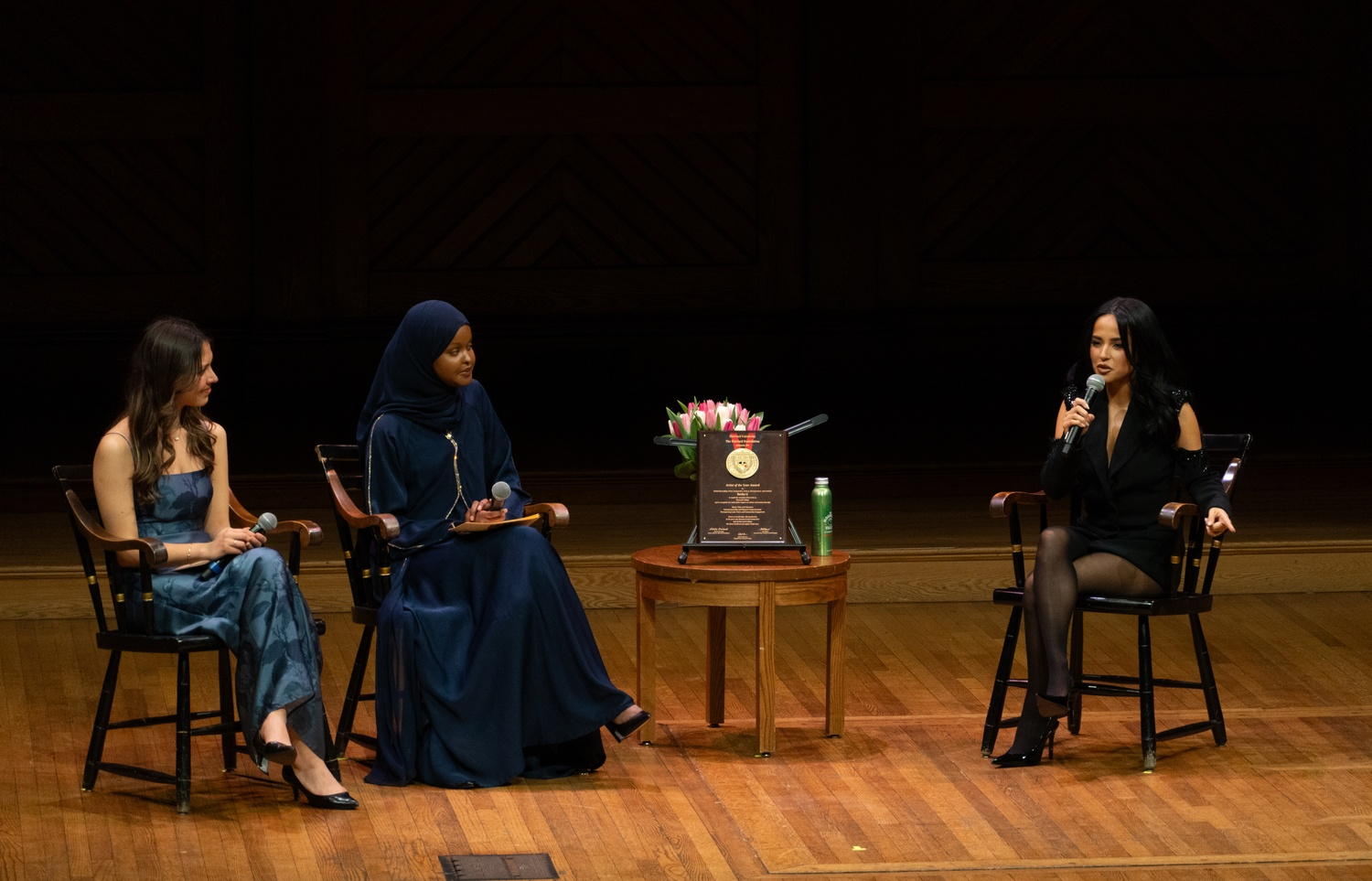
Asian American Women History: The Schlesinger Exhibit
admin
- 0
Asian American women’s history has often been sidelined in the broader narrative of the American experience, yet their stories are crucial to understanding the diverse fabric of U.S. culture. A new exhibition at the Schlesinger Library seeks to rectify this oversight by bringing to light the remarkable yet often overlooked contributions of Asian American women. From the resilience of the Denison House Chinese Girls Basketball Team in 1931 to pivotal historical legal battles led by women like Ah Fong, the exhibition challenges audiences to reckon with the complexities of Asian American culture and identity. Emphasizing the indispensable role of Asian women in history, this showcase highlights a range of artifacts that illustrate their struggles and triumphs throughout the past 150 years. With vital support from students and archivists, the exhibition aspires to shift perceptions and inspire future generations to appreciate the depth of Asian American women’s experiences and contributions.
The tale of women from Asian backgrounds in the United States encompasses a rich tapestry of experiences, contributions, and challenges faced by those who have navigated the intersections of race, gender, and immigration. This historical narrative often illuminates the perseverance of these women, who have influenced various sectors and movements across the nation. By exploring the archives at institutions like the Schlesinger Library, we can uncover the stories of Asian women that have long been relegated to the periphery of American history. Through exhibitions and scholarly research, the journey of these individuals sheds light on significant cultural shifts, raising awareness about their pivotal roles in shaping both community and national history. As we delve deeper into their narratives, we foster a greater understanding of Asian American culture and the essential contributions of women who have shaped the nation’s path.
Understanding Asian American Women History through Archives
Asian American women’s history has often been overlooked and underrepresented in mainstream narratives. The recent exhibition at the Schlesinger Library aims to shine a light on this crucial aspect of our cultural heritage, showcasing the lives and stories of women who contributed significantly to the American narrative, yet remain largely invisible. For instance, photographs from the 1904 St. Louis World’s Fair reveal the troubling representation of Ainu and Visayan women as ‘living exhibits’. This not only spotlights the historical context of these women but also raises critical questions about the representation and dignity of marginalized groups in the annals of history.
The exhibition, aptly titled ‘Illuminate’, emphasizes the importance of revisiting and archiving the stories of Asian American women, which reflect broader sociopolitical issues, including colonialism and immigration. By using archival materials, such as personal letters, photographs, and legal documents, the exhibition provides a platform where these women’s voices can be heard. This commitment to foregrounding Asian American women’s stories aligns with new archival approaches that prioritize the narratives crafted by the subjects themselves, thereby challenging existing historical narratives and their inherent biases.
The Cultural Impact of Asian American Women
Asian American culture has evolved through the rich tapestry of experiences and contributions made by women over the years. From artists and activists to scholars and caregivers, their influence permeates various aspects of society, shaping contemporary cultural identities. The Schlesinger Library’s exhibition serves as a testament to this impact, celebrating the foundation laid by pioneers who fought against erasure. The works featured, including political posters and zines, encapsulate the spirit of resilience and assertiveness that characterize the Asian American female experience, encouraging new generations to engage with and learn from their histories.
Furthermore, the intersectionality of Asian American women’s experiences reveals critical dimensions of race, gender, and identity politics. By analyzing their role in pivotal moments such as the Civil Rights movement and the recent anti-Asian violence during the COVID-19 pandemic, we can see how these women have consistently been at the forefront of social change. Their narratives, although sometimes obscured, provide essential insights into the struggles and triumphs faced by Asian women in history, enriching our understanding of American culture as a whole.
Collaborative Efforts in Retelling Histories
The collaborative project between students and archivists at the Schlesinger Library illustrates a dynamic and engaging method of uncovering previously untold stories of Asian American women. This educational model not only fosters academic growth but also empowers students to take part in the archival process, allowing them to be active participants in the exploration of history rather than passive recipients of information. By working alongside curators like Victor Betts and educators such as Erika Lee, students gain a deeper understanding of the institutional gaps within historical narratives, especially concerning Asian American culture.
As students dive into the archives, they bring their own perspectives and backgrounds, making connections between the past and present. For instance, the case of Ah Fong, a Chinese woman who fought for her rights, serves as a poignant example of how legal battles resonate with contemporary issues faced by immigrant communities. By highlighting these stories, the project not only advocates for the recognition of Asian American women’s contributions but also encourages critical discourse on how histories are recorded and remembered. This innovative approach paves the way for future learning initiatives, aiming to further illuminate hidden narratives within Asian American history.
Art as a Medium for Historical Reflection
Art plays a crucial role in reflecting and interpreting the historical narratives of marginalized communities, and the exhibition at the Schlesinger Library effectively utilizes this medium to engage audiences with the stories of Asian American women. Through commissioned pieces, like those from artist Shaina Lu, viewers are invited to experience the rich heritage and struggles of these women in a visually compelling context. This interplay of art and archives creates a multisensory experience that enhances understanding and emotional connection to the subject matter.
Furthermore, using art to highlight these stories serves as a powerful tool for activism and awareness. As attendees reflect on Lu’s translucent illustrations that capture the essence of Asian American women’s experiences, they are encouraged to consider the broader implications of their histories and current issues, such as systemic racism and gender inequality. The exhibition stands as a reminder that art is not merely an aesthetic endeavor but a vital means of storytelling that can catalyze change and foster community solidarity.
Legacies of Resistance: A Historical Perspective
The legacy of Asian American women is one of resilience and resistance, often characterized by their efforts against societal constraints and injustices. In exploring the stories from various archives, including the documentation from the Schlesinger Library, we see how these women have navigated challenges while asserting their rights and identities. Their involvement in significant legal cases, social movements, and cultural expressions provides a vital framework for understanding the complexities of Asian American experiences throughout history.
Moreover, by examining the broader historical context, it becomes evident that the struggles faced by Asian American women are not singular but intertwined with national narratives of immigration, exclusion, and civil rights. As highlighted in the exhibition, their fight for recognition and equality resonates with contemporary movements, reminding us that their stories are essential for a comprehensive understanding of American history. It is through this lens of resistance that we appreciate the contributions of Asian American women as integral to our national identity.
Exploring Erasure in Historical Narratives
The concept of erasure in historical narratives refers to the omission or undervaluation of certain voices or stories in the telling of a larger cultural history. Through the lens of the Schlesinger Library’s exhibition, we see firsthand how Asian American women have frequently been neglected in historical accounts, leading to a skewed understanding of consequential events and cultural developments. The project encourages viewers to confront this erasure, pushing them to ask critical questions about whose stories are highlighted and whose are silenced in mainstream history.
By shedding light on the narratives of Ainu and Visayan women showcased as curiosities at the World’s Fair, the exhibition serves as a microcosm of larger systemic issues that result in the marginalization of Asian American women’s contributions. Investigating these omissions not only enriches our collective history but also prompts discussions about the importance of inclusive archiving and representation. The collaborative efforts at the Schlesinger Library exemplify how educators and students can work together to reclaim and amplify these voices, ultimately providing a more nuanced understanding of the past.
Reimagining the Role of Educators in Archival Work
The partnership between students and educators at the Schlesinger Library redefines the role of teaching in the context of archival research. By co-creating the curriculum focused on Asian American women’s history, educators like Victor Betts and Erika Lee foster an environment of mutual learning and discovery. This collaborative approach not only empowers students to engage with primary sources but also encourages educators to rethink their methodologies and the significance of including diverse historical narratives in the classroom.
Such a model cultivates critical thinking skills that are valuable for future academic pursuits and activism. Students are encouraged to actively participate in discussions surrounding representation, power dynamics, and the impact of historical narratives on contemporary society. As the exhibition illustrates, the role of educators in shaping future historians and advocates is paramount, as they guide students in recognizing the importance of preserving and sharing the stories of marginalized groups, particularly Asian American women, within the broader cultural landscape.
The Future of Asian American Women’s Histories
The discussions initiated by exhibitions like ‘Illuminate’ signal a growing awareness and appreciation for Asian American women’s histories. As archivists and historians strive to document and celebrate these narratives, we are witnessing a transformative phase where their contributions are increasingly recognized in historical discourse. This momentum provides an opportunity for future scholars and activists to continue this important work, ensuring these women’s stories are preserved and integrated into the wider understanding of American history.
Looking ahead, the legacy of the Schlesinger Library’s efforts underscores the necessity for ongoing investment in archiving initiatives that focus on underrepresented communities. By fostering inclusive practices in historical documentation, society can move towards a more equitable representation of all voices in the narrative of America. As we reflect on the past and its implications, we have the responsibility to continue advocating for the recognition of Asian American women’s significance in history, ensuring their stories are not lost to the annals of time.
Frequently Asked Questions
What is the significance of the Schlesinger Library exhibition on Asian American women’s history?
The Schlesinger Library exhibition titled “Illuminate: Contextualizing Asian American Women’s Stories Through the Archives” showcases the often overlooked contributions and experiences of Asian American women throughout history. It emphasizes how these narratives have been pushed to the margins of American history and highlights the importance of recognizing their roles in shaping societal changes.
How does the exhibition at the Schlesinger Library illustrate the contributions of Asian women in history?
The exhibition at the Schlesinger Library uses various artifacts, including photographs, political posters, and personal narratives, to illustrate the contributions of Asian women in history. By showcasing their stories, the exhibit aims to challenge historical erasure and provide a richer understanding of Asian American culture across 150 years.
Who were the women highlighted in the Schlesinger Library’s exhibition, and why are their stories important?
The exhibition highlights women such as the Ainu and Visayan individuals who were part of the 1904 St. Louis World’s Fair. Their stories are important because they represent the colonial gaze and the historical objectification of Asian women. Revisiting these narratives helps to reclaim their identities and recognize their experiences within the broader context of Asian American women’s history.
What role do students play in the Schlesinger Library course on Asian American women’s history?
Students in the course titled “Asian American Women’s History in the Schlesinger Library” research archival materials and engage in discussions about the experiences of Asian American women. This hands-on approach allows them to explore themes of historical erasure and contribute to new understandings of their histories, particularly through projects related to notable figures and events.
What are some examples of Asian American women’s stories being highlighted in contemporary archives?
Contemporary archives like those at the Schlesinger Library are now beginning to highlight stories of Asian American women who narrate their own experiences, such as chefs Grace Zia Chu and Madhur Jaffrey. The exhibition emphasizes the importance of these personal narratives in understanding the historical context and the evolution of Asian American women’s roles in society.
How does the Schlesinger Library exhibition address issues of representation in Asian American history?
The Schlesinger Library exhibition addresses issues of representation by bringing to light the marginalized stories of Asian American women, presenting their contributions in a historical context that often overlooked them. By doing so, it encourages viewers to reconsider their perceptions of history and the significance of Asian American culture in American society.
What historical events are linked to the artwork and materials presented at the Schlesinger Library exhibition?
The exhibition links various historical events, such as the Chinese Exclusion Act, Japanese American internment, and the Civil Rights movement, to the experiences of Asian American women. It also contextualizes their stories in light of recent anti-Asian violence, particularly during the COVID-19 pandemic, showcasing the ongoing relevance of these narratives.
In what ways does the exhibition call for a reassessment of Asian American women’s contributions to American history?
The exhibition calls for a reassessment of Asian American women’s contributions by illustrating how their stories have been systematically marginalized. By spotlighting their efforts in activism, art, and community leadership, it invites the audience to recognize that Asian American history is integral to U.S. history, deserving of equal significance and attention.
| Key Points | Details |
|---|---|
| Schlesinger Exhibit | An exhibition titled “Illuminate: Contextualizing Asian American Women’s Stories Through the Archives” highlights the overlooked past of Asian American women. |
| Historical Artifacts | Features artifacts like photos of Ainu and Visayan women from the 1904 St. Louis World’s Fair, showcasing their stories and struggles. |
| Collaboration in Education | Developed alongside a University course, encouraging students to research and reflect on Asian American women’s historical contributions. |
| Research Findings | Students uncovered narratives such as the 1874 court case of Ah Fong, illustrating legal struggles of Chinese American women. |
| Cultural Contexts | The exhibit situates Asian American women’s stories within broader historical contexts, including exclusion acts and internment. |
| Future Goals | Curators aim to expand the Schlesinger Library collections focusing on Asian American women’s narratives. |
Summary
Asian American women history has often been overlooked in mainstream narratives, but recent exhibitions, such as “Illuminate: Contextualizing Asian American Women’s Stories Through the Archives,” are bringing their stories to light. These women have played essential roles in shaping America’s cultural and historical landscape, from the 1904 World’s Fair to modern legal battles for rights and justice. Through collaboration between students and mentors, significant artifacts and untold histories are explored, countering the erasure that has long affected their narratives. Such initiatives not only honor their contributions but also invite a reevaluation of American history as a whole, recognizing that Asian American women’s history is integral to understanding the broader tapestry of the American experience.

